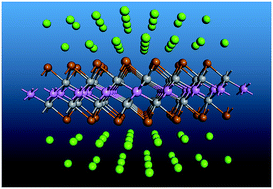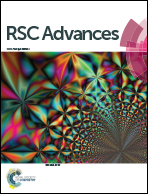Ti2PTe2 monolayer: a promising two-dimensional anode material for sodium-ion batteries†
Abstract
Developing efficient anode materials with a good electrochemical performance has been a key scientific issue in the development of sodium ion batteries (SIBs). In this work, by means of density functional theory (DFT) computations, we demonstrate that two-dimensional (2D) Ti2PTe2 monolayer is a promising candidate for this application. The exfoliation of Ti2PTe2 monolayer from its experimentally known layered bulk phase is feasible due to the moderate cohesive energy. Different from many binary 2D transitions metal chalcogenides (TMCs) that are semiconducting, Ti2PTe2 monolayer is metallic with considerable electronic states at the Fermi level. Remarkably, Ti2PTe2 monolayer has a considerably high theoretical capacity of 280.72 mA h g−1, a rather small Na diffusion barrier of 0.22 eV, and a low average open circuit voltage of 0.31 eV. These results suggest that Ti2PTe2 monolayer can be utilized as a promising anode material for SIBs with high power density and fast charge/discharge rates.



 Please wait while we load your content...
Please wait while we load your content...